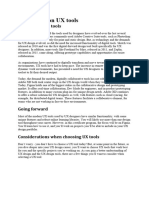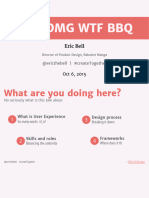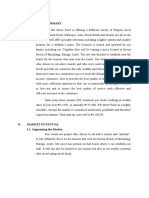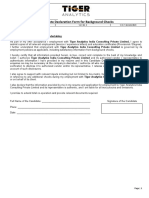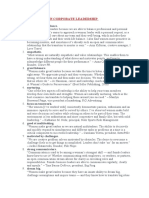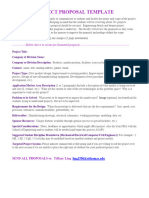0% found this document useful (0 votes)
13 views4 pagesTools 0 Basics
The document provides an overview of various design and collaboration tools used in the industry, detailing their types, primary uses, and real-world applications. Tools like Figma, UserTesting, and Miro facilitate UI/UX design, user research, and brainstorming, while AI-powered tools like ChatGPT and Uizard support content generation and rapid prototyping. The summary table categorizes each tool by type and industry role, highlighting their significance in product and design workflows.
Uploaded by
invaliduser163Copyright
© © All Rights Reserved
We take content rights seriously. If you suspect this is your content, claim it here.
Available Formats
Download as DOCX, PDF, TXT or read online on Scribd
0% found this document useful (0 votes)
13 views4 pagesTools 0 Basics
The document provides an overview of various design and collaboration tools used in the industry, detailing their types, primary uses, and real-world applications. Tools like Figma, UserTesting, and Miro facilitate UI/UX design, user research, and brainstorming, while AI-powered tools like ChatGPT and Uizard support content generation and rapid prototyping. The summary table categorizes each tool by type and industry role, highlighting their significance in product and design workflows.
Uploaded by
invaliduser163Copyright
© © All Rights Reserved
We take content rights seriously. If you suspect this is your content, claim it here.
Available Formats
Download as DOCX, PDF, TXT or read online on Scribd
/ 4














